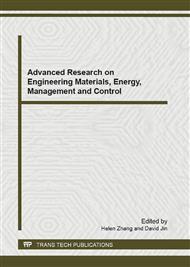p.355
p.359
p.364
p.369
p.373
p.377
p.381
p.385
p.389
The Design and Calculation of an Underwater Carrier’s Hood Separation
Abstract:
Underwater carrier usually contains an aircraft. The Separation of its hood is designed to clear the flight channel for the aircraft which is carried. So it requires high rapidity, reliability and safety. Based on the analysis of its design requirements and influencing factors, puts forward a separation mode of linear cumulative blasting cutting whose collocation is circumferential and radial. And establishes the dynamic equations of the hood separation to describe the property of hood separation and forecast the trajectory of separated body. Example results show the correctness of the calculation model. This work could provide theoretical support for the design of underwater carrier
Info:
Periodical:
Pages:
373-376
Citation:
Online since:
January 2012
Authors:
Keywords:
Price:
Сopyright:
© 2012 Trans Tech Publications Ltd. All Rights Reserved
Share:
Citation:


